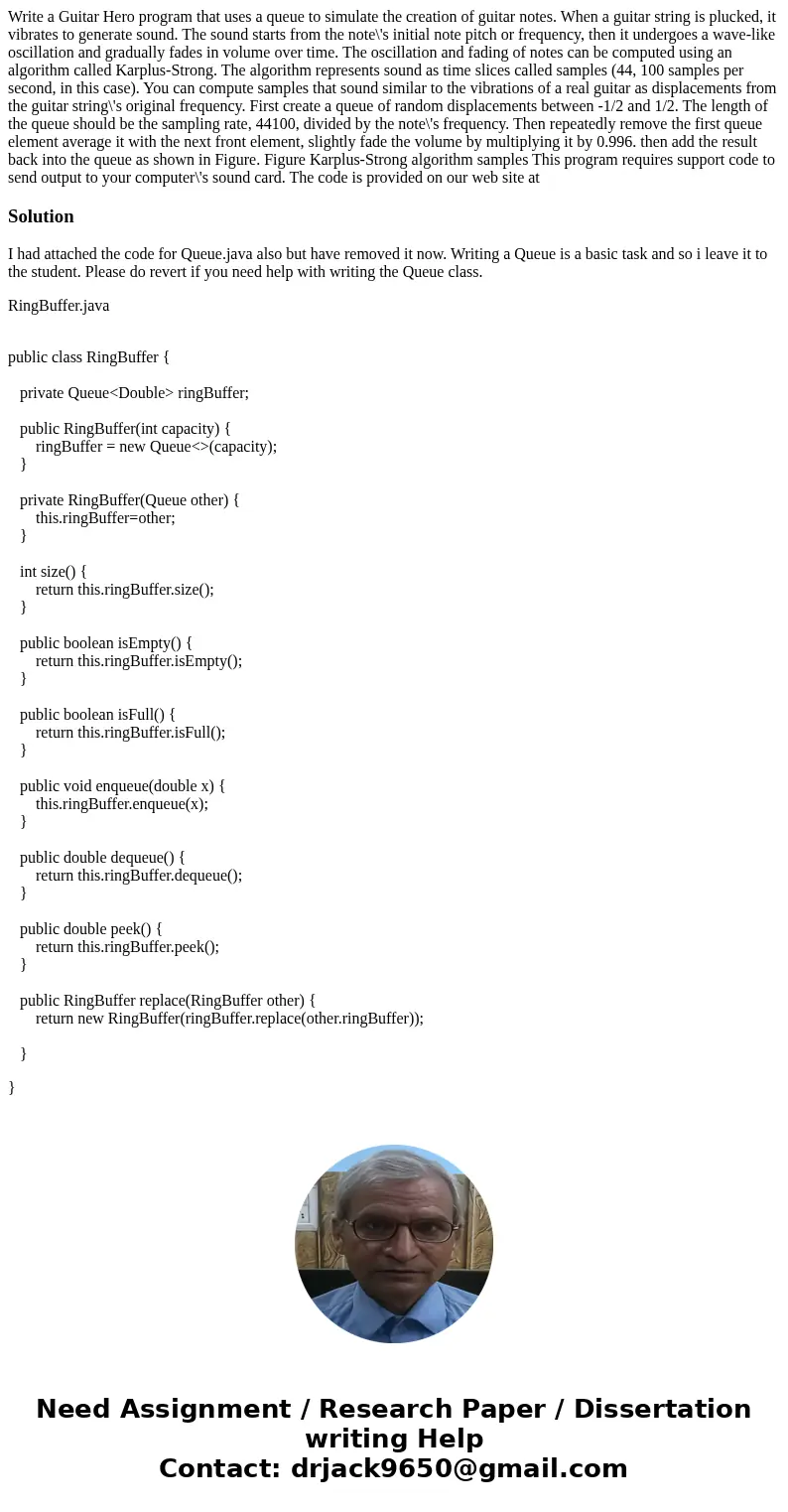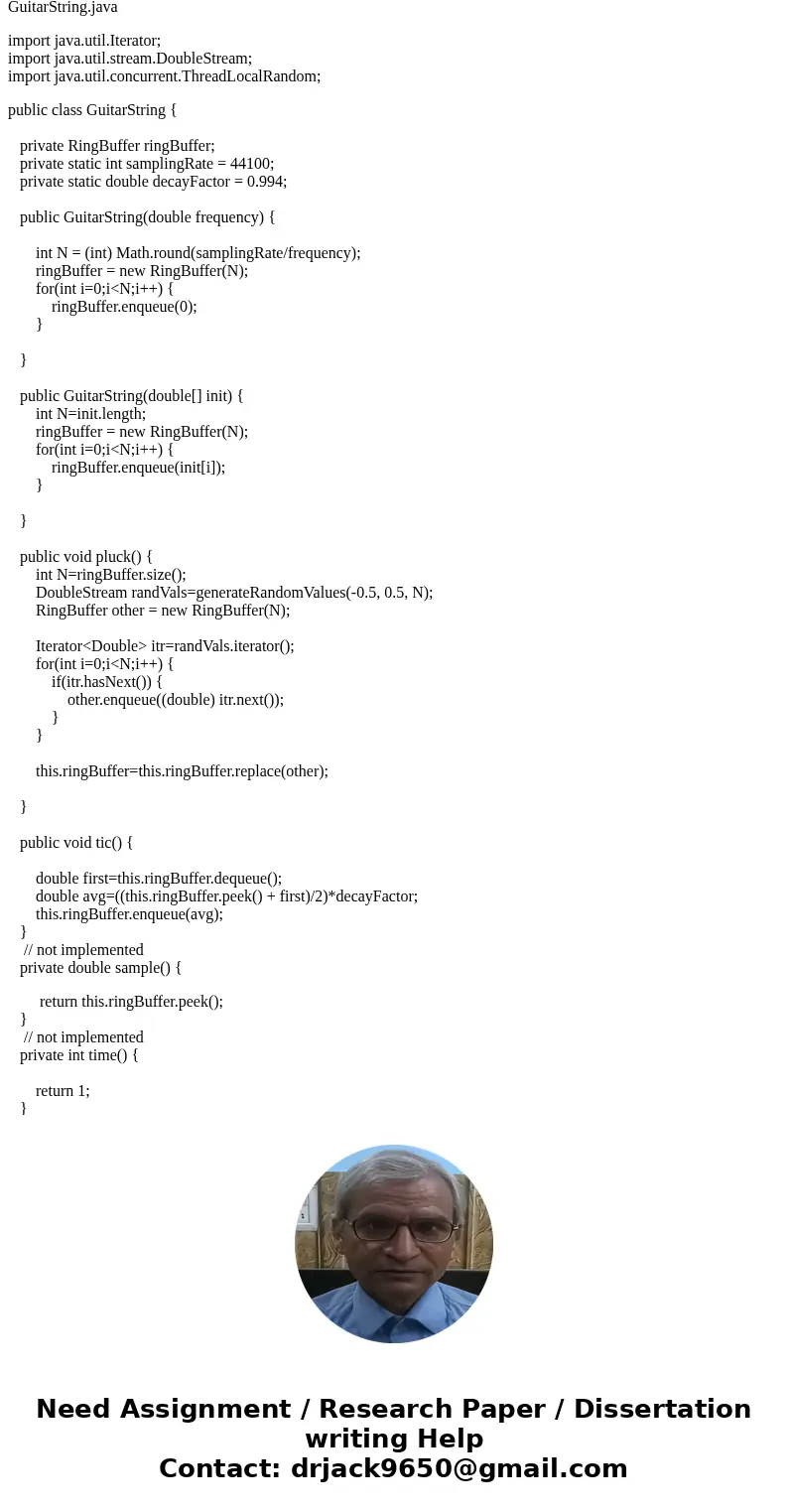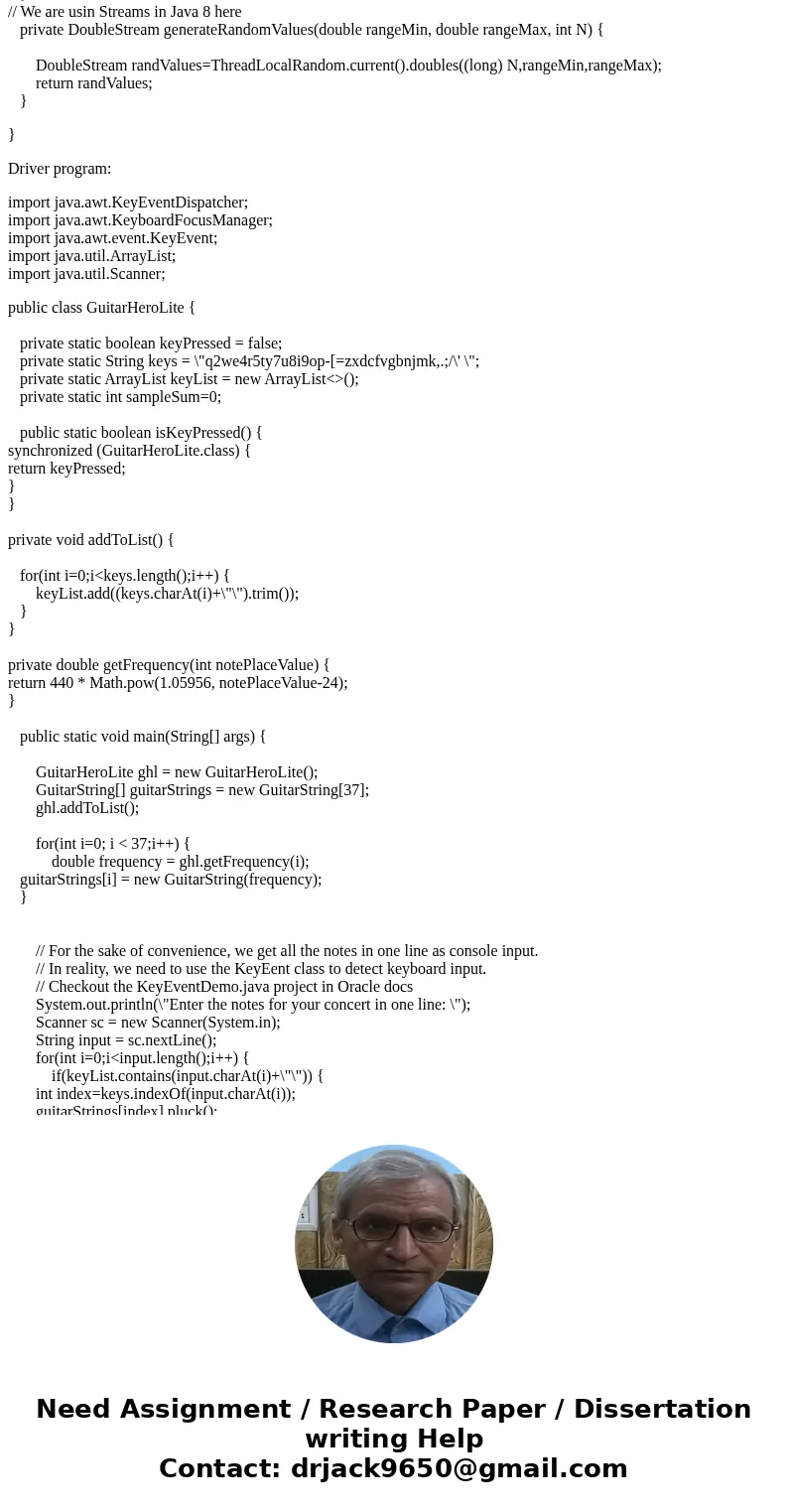Write a Guitar Hero program that uses a queue to simulate th
Solution
I had attached the code for Queue.java also but have removed it now. Writing a Queue is a basic task and so i leave it to the student. Please do revert if you need help with writing the Queue class.
RingBuffer.java
public class RingBuffer {
private Queue<Double> ringBuffer;
public RingBuffer(int capacity) {
ringBuffer = new Queue<>(capacity);
}
private RingBuffer(Queue other) {
this.ringBuffer=other;
}
int size() {
return this.ringBuffer.size();
}
public boolean isEmpty() {
return this.ringBuffer.isEmpty();
}
public boolean isFull() {
return this.ringBuffer.isFull();
}
public void enqueue(double x) {
this.ringBuffer.enqueue(x);
}
public double dequeue() {
return this.ringBuffer.dequeue();
}
public double peek() {
return this.ringBuffer.peek();
}
public RingBuffer replace(RingBuffer other) {
return new RingBuffer(ringBuffer.replace(other.ringBuffer));
}
}
GuitarString.java
import java.util.Iterator;
import java.util.stream.DoubleStream;
import java.util.concurrent.ThreadLocalRandom;
public class GuitarString {
private RingBuffer ringBuffer;
private static int samplingRate = 44100;
private static double decayFactor = 0.994;
public GuitarString(double frequency) {
int N = (int) Math.round(samplingRate/frequency);
ringBuffer = new RingBuffer(N);
for(int i=0;i<N;i++) {
ringBuffer.enqueue(0);
}
}
public GuitarString(double[] init) {
int N=init.length;
ringBuffer = new RingBuffer(N);
for(int i=0;i<N;i++) {
ringBuffer.enqueue(init[i]);
}
}
public void pluck() {
int N=ringBuffer.size();
DoubleStream randVals=generateRandomValues(-0.5, 0.5, N);
RingBuffer other = new RingBuffer(N);
Iterator<Double> itr=randVals.iterator();
for(int i=0;i<N;i++) {
if(itr.hasNext()) {
other.enqueue((double) itr.next());
}
}
this.ringBuffer=this.ringBuffer.replace(other);
}
public void tic() {
double first=this.ringBuffer.dequeue();
double avg=((this.ringBuffer.peek() + first)/2)*decayFactor;
this.ringBuffer.enqueue(avg);
}
// not implemented
private double sample() {
return this.ringBuffer.peek();
}
// not implemented
private int time() {
return 1;
}
// We are usin Streams in Java 8 here
private DoubleStream generateRandomValues(double rangeMin, double rangeMax, int N) {
DoubleStream randValues=ThreadLocalRandom.current().doubles((long) N,rangeMin,rangeMax);
return randValues;
}
}
Driver program:
import java.awt.KeyEventDispatcher;
import java.awt.KeyboardFocusManager;
import java.awt.event.KeyEvent;
import java.util.ArrayList;
import java.util.Scanner;
public class GuitarHeroLite {
private static boolean keyPressed = false;
private static String keys = \"q2we4r5ty7u8i9op-[=zxdcfvgbnjmk,.;/\' \";
private static ArrayList keyList = new ArrayList<>();
private static int sampleSum=0;
public static boolean isKeyPressed() {
synchronized (GuitarHeroLite.class) {
return keyPressed;
}
}
private void addToList() {
for(int i=0;i<keys.length();i++) {
keyList.add((keys.charAt(i)+\"\").trim());
}
}
private double getFrequency(int notePlaceValue) {
return 440 * Math.pow(1.05956, notePlaceValue-24);
}
public static void main(String[] args) {
GuitarHeroLite ghl = new GuitarHeroLite();
GuitarString[] guitarStrings = new GuitarString[37];
ghl.addToList();
for(int i=0; i < 37;i++) {
double frequency = ghl.getFrequency(i);
guitarStrings[i] = new GuitarString(frequency);
}
// For the sake of convenience, we get all the notes in one line as console input.
// In reality, we need to use the KeyEent class to detect keyboard input.
// Checkout the KeyEventDemo.java project in Oracle docs
System.out.println(\"Enter the notes for your concert in one line: \");
Scanner sc = new Scanner(System.in);
String input = sc.nextLine();
for(int i=0;i<input.length();i++) {
if(keyList.contains(input.charAt(i)+\"\")) {
int index=keys.indexOf(input.charAt(i));
guitarStrings[index].pluck();
for(int j=0;j<37;j++) {
sampleSum+=guitarStrings[j].sample();
}
// Play this sample
// have to write code to feed this into an audio device
for(int k=0;k<37;i++) {
guitarStrings[k].tic();
}
}
}
}
}




 Homework Sourse
Homework Sourse